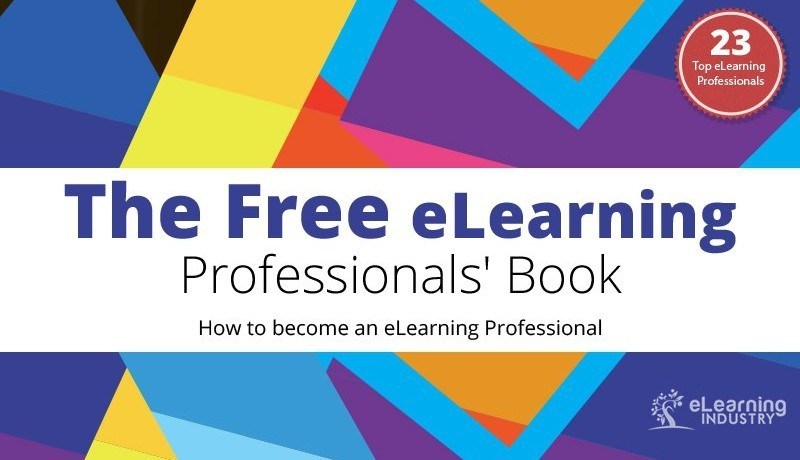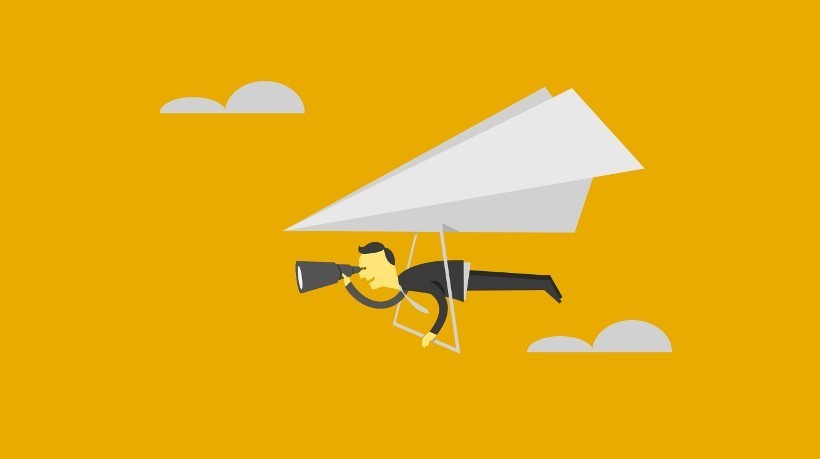How To Become An eLearning Professional
In this article, I'll share the best eLearning career tips I've collected from our Free eBook: How To Become An eLearning Professional which is filled with the knowledge, wisdom, and experience of 23 carefully selected eLearning professionals. These top-notch eLearning professionals create a highly influential eLearning team of experts and they are here to share their invaluable know-how on how to become an eLearning professional. Ready? Get comfortable and read on.
- Go to eLearning conferences.
"The eLearning Guild’s DevLearn and ASTD’s TechKnowledge are two good ones. Going to eLearning conferences really does make a difference to connect face to face with other people who are in the trenches, doing what you’re doing. Also, try new approaches and see what works. Don’t be afraid to make mistakes. This is exactly how we learn!"
By Cammy Bean - Start with an established company.
"To really learn the craft, I always advise starting with an established company who can locate you alongside experienced people, who will be able to mentor and guide your training and personal development. Experience counts for a lot, so get this while working alongside a good team. How to use a particular tool is less important, as modern tools are quick to learn. The key to success is to appreciate how people learn, understand the thought process that goes into instructional design, what works well, and a range of different ways of achieving goals."
By Tim Buff - Gain empathy from both creators and users.
"First, observe and interview high-performing, typical, and low-performing members of your target audience separately. Then, interview people that use the product or service your audience creates in their typical performance context. Understanding both perspectives will help you design for actual needs."
By Brandon Carson - Tune in to professional groups.
"I advise people interested in joining the profession to start by tuning in to professional groups, such as those available on LinkedIn. Once you join the group, you get advice about tools and techniques, best practices, methodologies, and adult learning."
By David B. Demyan - Learn, apply, and improve.
"Make it a priority to learn new technologies, theories, and processes for creating effective eLearning. Then, be sure to use the technologies, processes, and theories you have learned. And finally, to remain creative and competitive, it is crucial that you change, adapt, and grow as an eLearning professional. Hold yourself to high standards! Learn from your mistakes! Improve on your success!"
By Joel Gardner, PhD - Focus on one discipline.
"If you choose to focus on one discipline, you will be able to advance your skills to the point of being recognized as a “pro” in that discipline."
By Parker A. Grant - Be a learner yourself and keep learning.
"There’s always something new to discover that will not only help you think from a learner’s perspective, but will also boost your skills. Look for new books, blogs, websites, magazines and journals."
By Matthew Guyan - Use communication strategically.
"Strategic communication is the surest route to becoming an eLearning Pro. I use strategic communication to establish rapport with my learners, build them confidence, keep them focused, and always ask them for feedback. This is a clever approach to communication; it proves to your students and colleagues that you’re an eLearning pro."
By Liz Hardy, PhD - Know how to market yourself.
"Apart from education, skills, and experience, you need to have the ability to market yourself. What is your niche? How are you branding yourself? Social media provides an avenue to be an eLearning professional on an international level. Communicate effectively the benefits and qualities of your courses and programs; describing the significance of your program and your development expertise will ensure that you gain the recognition and support of your colleagues and intended audience. Think about the importance of your course and communicate the value to your team, your network, and the world!"
By Anita S. Horsley, M.Ed. - Learn how to write.
"The most engaging eLearning relies on the message it contains. Even the best learning technology cannot mask poor grammar. As the Greek sage Epictetus once said, “If you wish to be a writer, write”. I charge each of you that as learning professionals it is vital that we write well."
By Ken Hubbell - Expose yourself to all aspects of the planning, development, and delivery process.
"This way, you will understand the challenges associated with each phase and you’ll learn how to support a team of developers who each have a different area of expertise to create engaging eLearning courses that deliver on their learning objectives. Finally, you’ll want to expose yourself to as many eLearning courses as you can. Explore different designs and creative approaches used in various authoring environments."
By Ruth Kustoff - Help others learn by sharing your excellent finds and documenting your experiences in the public sphere.
"But don’t fully rely on the virtual world; get out there and meet people in person. Network at local meet ups, get involved with a professional association, and attend a conference if you have the funds. Perhaps you can volunteer in exchange for the cost of attendance. Even if you work alone, there’s no excuse for remaining isolated. Today there is an endless stream of knowledge broadcast every moment. Jump in!"
By Connie Malamed - Practice your “elevator speech”.
"An elevator speech is what you do and why it’s important, summed up in 2 minutes or less. Consider versions for different audiences (your learners, your boss, perspective clients, etc.) and tailor your pitches for each type. Practice your pitch on friends to check for understanding. No matter how amazing your portfolio is, you must be able to promote it to the person you’re in front of."
By Jessica Martello - Don't forget quality.
"Learners will not be happy trying to read text that is too small or watching poor quality videos. Do everything you can to maximize the technical quality of your product. A do-it-yourself video, for example, is not usually a good idea. Consult with the professionals."
By Don McIntosh - Provide a chance for learners to practice applying the required skills and get feedback.
"Skills are difficult to master by reading eLearning materials alone. Our community really needs to do everything possible to make sure practice applying the concepts is provided as part of eLearning."
By Dale E. Olsen - Create a solid partnership based on open communications and trust with your clients.
"Keep up with the business, understand what success looks like to them, and focus on providing solutions that meet their needs. This way you will find opportunities that are fun to develop, and effective to deliver too!"
By William J. Ryan, PhD - Understand the digital shebang (the yin) and learn Instructional Design theory (the yang).
"First, learn about social media, games, authoring tools, big data, and new stuff as it emerges. (Caveat: This is all about balance, so reach no conclusions until you’ve read through to the end.) Second, Instructional Design theory is an academic field with a long history and lots of applied brain cells; there is great stuff to learn there. Don’t skip this step and don’t be seduced by authoring technologies and focus on development alone."
By Arturo Schwartzberg - Use conversational dialogue.
"I’m not sure anyone actually uses business lingo. If and when they do, it sounds trite, pretentious, and confusing. Using a conversational tone in narration can ensure comprehension, while it also feels more real."
By Diane Senffner, M.Ed. - Share.
"Contribute your time and expertise to individuals or groups to explore ideas, give help, and provide service, or act as an advisor. Even if you think you’re a novice to someone new to the field, you can have a lot to offer."
By Christopher J. Stape - Get your hands dirty.
"Tinker with authoring tools, play with multimedia, and participate on social platforms. Experiment with all the software you can get your hands on, to find out what it can and cannot do. Familiarize yourself with its nuances, and critically reflect on how you might use it for learning purposes."
By Ryan Tracey - Work closely with Subject Matter Experts.
"They will help you create meaningful content, which means useful to the learners. Do you know what’s their motivation? Is it to improve their performance in order to earn bonuses? Is it the opportunity to get promoted? No matter what the motivation is, the important thing is that they want to cover a specific gap. Does your solution cover this gap?"
By Rosalie Ledda Valdez - Have passion and perseverance.
"Perseverance will help you continue pushing yourself to the limit. Passion can allow you to come up with genuinely creative learning experiences. Perseverance will allow you to always offer a fresh solution to problems. Passion will help you stay focused on your goals. Perseverance is all you need to find your own voice. So, create eLearning with passion and persist until you find how you can contribute to this field in a unique way. You will be surprised by what you can accomplish."
By Mayra Aixa Villar - Prepare.
"I keep a digital “scrapbook” of look-and-feel, activity, and story-telling ideas. I’ve always kept screen shots and written notes, but I’ve begun to use Pinterest as well. Building samples is also a great use of bits of down time. Being able to draw from these resources saves me a ton of time in designing and development."
By Mary E. Vivit
Have you ever met a top-notch eLearning professional? Have you ever wondered what makes them exceptional? Read the article The Habits That Separate Top-Notch eLearning Professionals From The Rest and learn the 10 habits that separate truly great eLearning professionals from the mediocre ones in order for you to understand what it takes to stand out from the crowd in the eLearning industry.







